The Dictatorship
Trump says it might be better to let Ukraine and Russia ‘fight for a while’
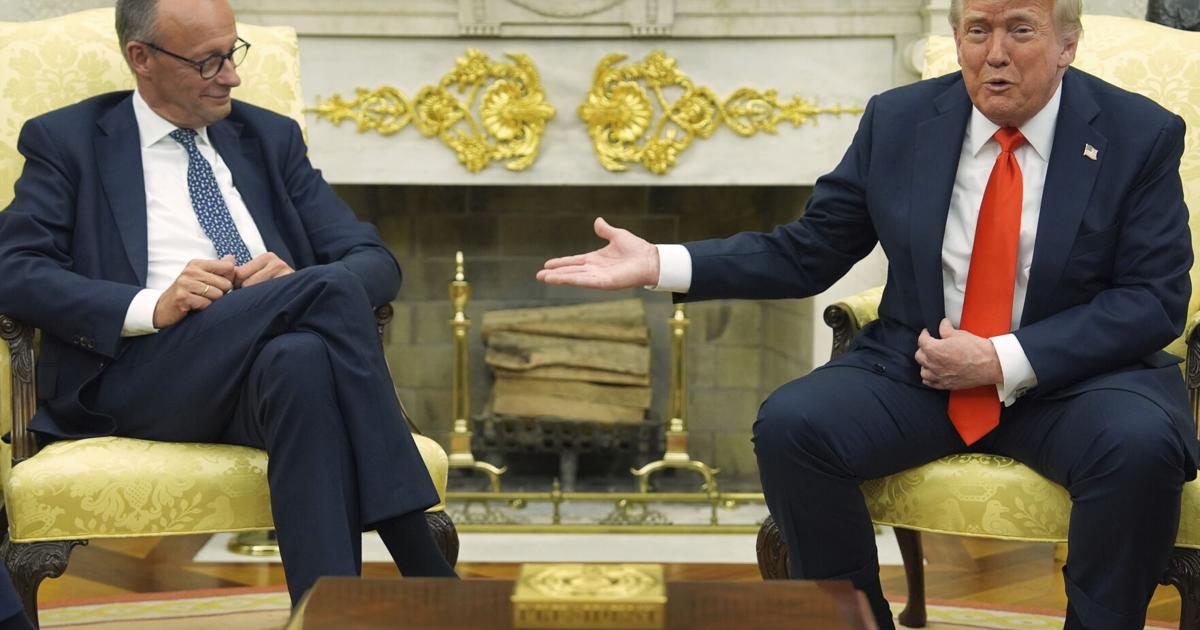
WASHINGTON (AP) — President Donald Trump said Thursday that it might be better to let Ukraine and Russia “fight for a while” before pulling them apart and pursuing peace, even as Germany’s new chancellor appealed to him as the “key person in the world” who could halt the bloodshed by pressuring Vladimir Putin.
In an Oval Office meeting with Chancellor Friedrich Merzthe U.S. president likened the war in Ukraine — which Russia invaded in February 2022 — to a fight between two children who hate each other. Trump said that with children, “sometimes you’re better off letting them fight for a while and then pulling them apart,” adding that he relayed the analogy to Putin in a call this week.
“I said, ‘President, maybe you’re going to have to keep fighting and suffering a lot,’ because both sides are suffering before you pull them apart, before they’re able to be pulled apart,” Trump said. “You see in hockey, you see it in sports. The referees let them go for a couple of seconds, let them go for a little while before you pull them apart.”
The comments were a remarkable detour from Trump’s often-stated appeals to stop the violence in Ukraine — and he again denounced the bloodshed Thursday even as he floated the possibility that the two countries should continue the war for a time. Merz carefully sidestepped Trump’s assertions and emphasized that the U.S. and Germany both agree on “how terrible this war is,” while making sure to lay blame squarely on Putin for the violence and make the point that Germany was siding with Ukraine.
“We are both looking for ways to stop it very soon,” Merz said in the Oval Office. “I told the president before we came in that he is the key person in the world who can really do that now by putting pressure on Russia.”
Thursday’s meeting was the first time the two leaders sat down in person, and Merz left the public portion unscathed as he successfully avoided the kind of made-for-TV confrontation in the Oval Office that befell other world leaders such as Ukraine’s Volodymyr Zelenskyy and Cyril Ramaphosa, the president of South Africa. Trump and Merz began by exchanging pleasantries — Merz gave Trump a gold-framed birth certificate of the U.S. president’s grandfather Friedrich Trump, who emigrated to America from Kallstadt, Germany, and Trump called the chancellor a “very good man to deal with.”
“He’s difficult, I would say? Can I say that? It’s a positive. You wouldn’t want me to say you’re easy, right?” Trump said, gently ribbing Merz. “He’s a very great representative of Germany.”
Merz told German reporters after the White House meeting that he had invited Trump to visit Germany, “his home country,” and added that the two leaders “get along well on the personal level.”
Trump and Merz had previously spoken several times by phone since Merz took office on May 6. German officials say the two leaders have started to build a “decent” relationship. Merz avoided the antagonism that defined Trump’s relationship with one of his predecessors, Angela Merkel, in the Republican president’s first term.
Merz emphasizes Ukraine support
The 69-year-old Merz — who came to office with an extensive business background — is a conservative former rival of Merkel’s who took over her party after she retired from politics.
Merz has thrown himself into diplomacy on Ukraine, traveling to Kyiv with fellow European leaders days after taking office and receiving Zelenskyy in Berlin last week. He has thanked Trump for his support for an unconditional ceasefire while rejecting the idea of “dictated peace” or the “subjugation” of Ukraine and advocating for more sanctions against Russia.
On Thursday, Trump also kept the threat of sanctions on the table — but for both Russia and Ukraine. He said he has not looked at bipartisan Senate legislation that would impose harsh economic punishments on Moscow, but said of sanctions efforts that “they would be guided by me,” rather than Capitol Hill.
“When I see the moment where it’s not going to stop … we’ll be very, very tough,” Trump said. “And it could be on both countries, to be honest. It takes two to tango.”
For Merz’s part, he used Friday’s anniversary of D-Day — when Allied forces launched an assault that began the liberation of Europe from German occupation — to appeal to Trump to help lead the ending of another violent war on the continent.
Merz noted that June 6, 1944, began the liberation of Germany from a Nazi dictator and that “American is again in a very strong position to so something on this war and ending this war.”
“That was not a pleasant day for you?” Trump interjected to the German leader when he referenced D-Day.
At home, Merz’s government is intensifying a drive that his immediate predecessor, Olaf Scholz, began to bolster the German military after Russia invaded Ukraine. In Trump’s first term, Berlin was a target of his ire for failing to meet the current NATO target of spending 2% of gross domestic product on defense, and Trump is now demanding at least 5% from allies.
Ahead of Thursday’s meeting, a White House official said the administration planned to stress to Germany that it should increase its defense spending and that the upcoming NATO summit in The Netherlands was a good opportunity to commit to Trump’s 5% pledge. But during an exchange with reporters, Trump praised Berlin: “I know that you’re spending more money on defense now and quite a bit more money. That’s a positive thing.”
Scholz set up a 100 billion euro ($115 billion) special fund to modernize Germany’s armed forces — called the Bundeswehr — which had suffered from years of neglect. Germany has met the 2% target thanks to the fund, but it will be used up in 2027. Merz has endorsed a plan for all allies to aim to spend 3.5% of GDP on their defense budgets by 2032, plus an extra 1.5% on potentially defense-related things like infrastructure.
Tariff trouble
Another top priority for Merz is to get Germany’s economyEurope’s biggest, moving again after it shrank the past two years. He wants to make it a “locomotive of growth,” but Trump’s tariff threats are a potential obstacle for a country whose exports have been a key strength. At present, the economy is forecast to stagnate in 2025.
Germany exported $160 billion worth of goods to the U.S. last year, according to the Census Bureau. That was about $85 billion more than what the U.S. sent to Germany, a trade deficit that Trump wants to erase.
“Germany is one of the very big investors in America,” Merz told German reporters Thursday morning ahead of his visit with Trump. “Only a few countries invest more than Germany in the USA. We are in third place in terms of foreign direct investment.”
The U.S. president has specifically gone after the German auto sector, which includes major brands such as Audi, BMW, Mercedes Benz, Porsche and Volkswagen. Americans bought $36 billion worth of cars, trucks and auto parts from Germany last year, while the Germans purchased $10.2 billion worth of vehicles and parts from the U.S. Trump’s 25% tariff on autos and parts is specifically designed to increase the cost of German-made automobiles.
There’s only so much Merz can achieve on his view that tariffs “benefit no one and damage everyone” while in Washington, as trade negotiations are a matter for the European Union’s executive commission. Trump hinted at that Thursday, saying the trade situation will mostly depend on the negotiations with the 27-country bloc.
“We’ll end up hopefully with a trade deal,” Trump said. “Or we’ll do something. We’ll do the tariffs.”
Trump recently delayed a planned 50% tariff on goods coming from the European Union, which would have otherwise gone into effect this month.
___
Moulson reported from Berlin. Associated Press writer Josh Boak in Washington contributed to this report.
The Dictatorship
Trump calls for a ceasefire deal on the war in Gaza as signs of progress emerge

TEL AVIV, Israel (AP) — U.S. President Donald Trump on Sunday urged progress in ceasefire talks in the 20-month war in Gaza between Israel and Hamas, though some weary Palestinians were skeptical about the chances. Israel issued a new mass evacuation order for parts of northern Gaza.
Ron Dermer, a top adviser to Prime Minister Benjamin Netanyahuwas set to travel to Washington this week for talks on a ceasefire, an Israeli official said, and plans were being made for Netanyahu to travel there in the coming weeks, a sign there may be movement on a deal.
Netanyahu was meeting with his security Cabinet on Sunday evening, the official said on condition of anonymity to discuss plans that hadn’t been finalized.
“MAKE THE DEAL IN GAZA. GET THE HOSTAGES BACK!!!” Trump wrote on social media early Sunday. Trump raised expectations Friday by saying there could be an agreement within the next week.
Some Palestinians doubtful of latest efforts
An eight-week ceasefire was reached as Trump took office earlier this year, but Israel resumed the war in March after trying to get Hamas to accept new terms on next steps.
“Since the beginning of the war, they have been promising us something like this: Release the hostages and we will stop the war,” said one Palestinian, Abdel Hadi Al-Hour. “They did not stop the war.”
Displaced Palestinians flee Jabalia after the Israeli army issued evacuation orders in Gaza City, June 29, 2025. (AP Photo/Jehad Alshrafi)
Displaced Palestinians flee Jabalia after the Israeli army issued evacuation orders in Gaza City, June 29, 2025. (AP Photo/Jehad Alshrafi)
Israeli attacks continued. An airstrike Sunday evening hit a house sheltering displaced people in the Jabaliya al-Nazla area, killing at least 15, according to Fares Awad, head of the Gaza’s Health Ministry’s ambulance and emergency services in the territory’s north. He said women and children made up over half the dead.
Israel’s military did not comment on the strike, but the area fell under the latest evacuation order.
During a visit to Israel’s internal security service, Shin Bet, Netanyahu said that the Israel-Iran war and ceasefire have opened many opportunities: “First of all, to rescue the hostages. Of course, we will also have to solve the Gaza issue, to defeat Hamas, but I estimate that we will achieve both tasks.”
Major sticking point for any deal
But talks between Israel and Hamas have repeatedly faltered over a major sticking point — whether the war should end as part of any ceasefire agreement.
Hamas official Mahmoud Merdawi accused Netanyahu of stalling progress on a deal, saying on social media that the Israeli leader insists on a temporary agreement that would free just 10 of the hostages. About 50 hostages remain, with less than half believed to be alive.
Netanyahu spokesperson Omer Dostri said that “Hamas was the only obstacle to ending the war,” without addressing Merdawi’s claim.
Hamas says it is willing to free all the hostages in exchange for a full withdrawal of Israeli troops and an end to the war in Gaza. Israel rejects that offer, saying it will agree to end the war if Hamas surrenders, disarms and goes into exile, something that the group refuses.
The war in Gaza began with the Hamas-led attack on southern Israel on Oct. 7, 2023, in which militants killed 1,200 people and took roughly 250 hostage.
Gaza’s Health Ministry said that another 88 people had been killed by Israeli fire over the past 24 hours, raising the war’s toll among Palestinians to 56,500. The ministry, which operates under the Hamas government, doesn’t distinguish between militants and civilians in its count, but says more than half of the dead are women and children.
Displaced Palestinians flee Jabalia after the Israeli army issued evacuation orders in Gaza City, June 29, 2025. (AP Photo/Jehad Alshrafi)
Displaced Palestinians flee Jabalia after the Israeli army issued evacuation orders in Gaza City, June 29, 2025. (AP Photo/Jehad Alshrafi)
Displaced Palestinians flee Jabalia after the Israeli army issued evacuation orders in Gaza City, June 29, 2025. (AP Photo/Jehad Alshrafi)
Displaced Palestinians flee Jabalia after the Israeli army issued evacuation orders in Gaza City, June 29, 2025. (AP Photo/Jehad Alshrafi)
The war has displaced most of Gaza’s population, often multiple times, obliterated much of the urban landscape and left people overwhelmingly reliant on outside aid, which Israel has limited since the end of the latest ceasefire.
Fewer than half of Gaza’s hospitals are even partly functional, and more than 4,000 children need medical evacuation abroad, a new U.N. humanitarian assessment says.
“We are exhausted, we are tired. We hope to God that the war will end,” said one Palestinian, Mahmoud Wadi.
Military moves toward center of Gaza City
Israel’s military ordered a mass evacuation of Palestinians in large swaths of northern Gaza, home to hundreds of thousands who had returned during the ceasefire earlier this year.
The order includes multiple neighborhoods in eastern and northern Gaza City, as well as the Jabaliya refugee camp. Palestinians in Gaza City began loading children, bedding and other essentials onto donkey carts, uprooted once more.
The military will expand its attacks westward to the city’s center, with calls for people to move toward the Muwasi area in southern Gaza, Col. Avichay Adraee, a military spokesperson, said on social media.
The offensive aims to move Palestinians to southern Gaza, so forces can more freely operate against militants. Rights groups say it would amount to forcible displacement.
Trump slams Netanyahu trial
Trump also doubled down on his criticism of the legal proceedings against Netanyahu, who is on trial for alleged corruptioncalling it “a POLITICAL WITCH HUNT.”
In the post Saturday evening, Trump said the trial interfered with ceasefire talks, saying Netanyahu “is right now in the process of negotiating a Deal with Hamas, which will include getting the Hostages back.”
Last week, Trump called for the trial to be canceled. It was a dramatic interference in the domestic affairs of a sovereign state. It unnerved many in Israeldespite Trump’s popularity there.
The trial has repeatedly been postponed at Netanyahu’s request, citing security and diplomatic developments.
On Sunday, the court agreed to call off two more days of testimony by him scheduled this week.
___
Magdy reported from Cairo and Shurafa from Deir al-Balah, Gaza Strip.
___
Follow the AP’s war coverage at https://apnews.com/hub/israel-hamas-war
The Dictatorship
Republican North Carolina Sen. Thom Tillis announces he will not run for re-election
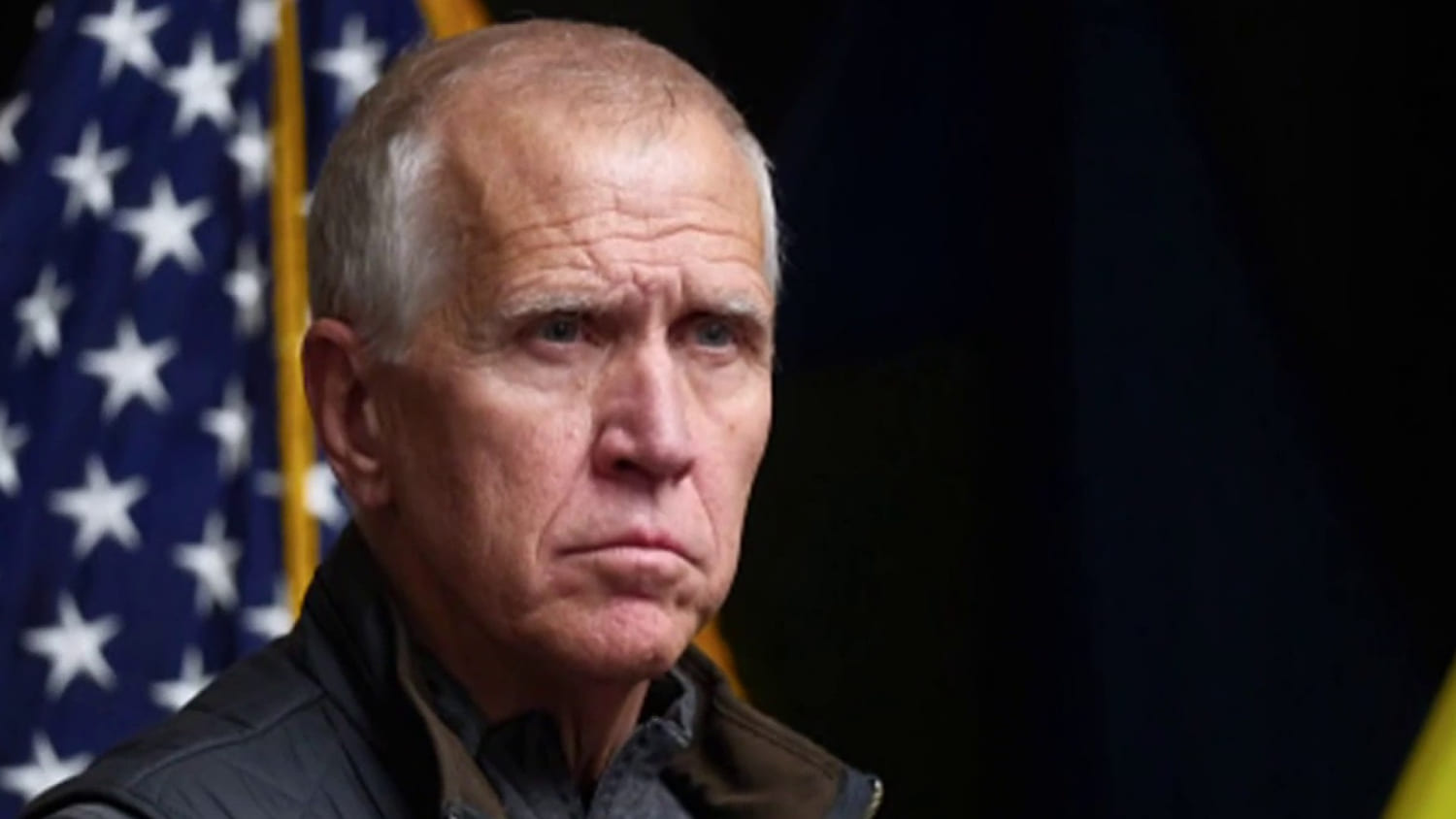
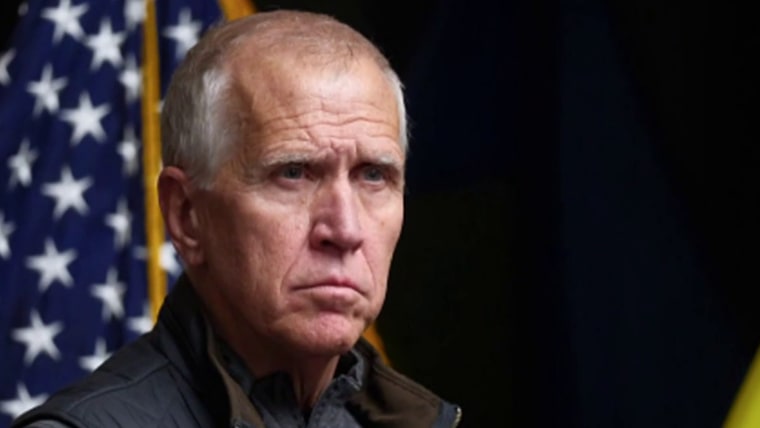
-
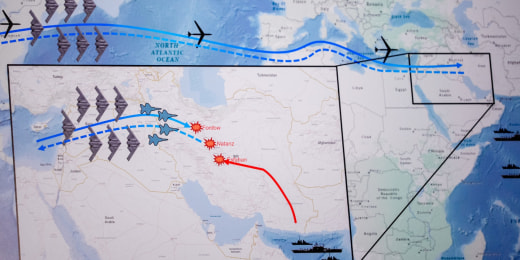
Analyst says it will take weeks, if not months, to know real damage to Iran’s nuclear program from U.S. airstrikes
05:12
-
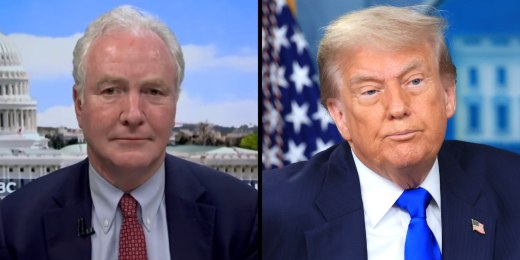
Senator Chris Van Hollen on Trump spending bill as it enters debate on Capitol Hill
08:23
-
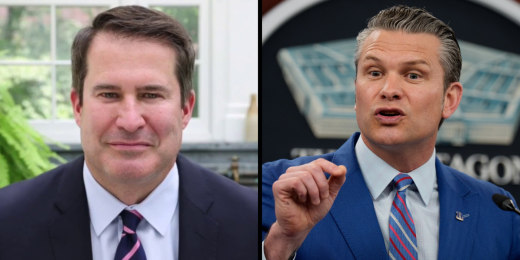
Inside the Iran airstrikes briefing: Rep. Moulton on the demeanor of Secys. Rubio, Hegseth
08:27
-
Now Playing

-
UP NEXT
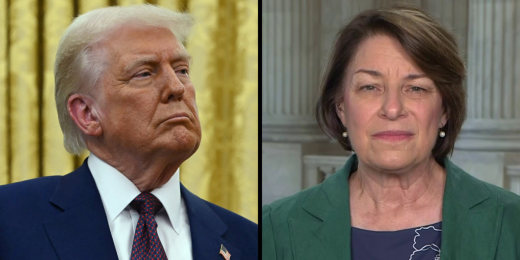
‘This bill is a ripoff’: Sen. Amy Klobuchar on Trump Budget Bill
08:51
-

Family of Venezuelan man deported to El Salvador has no idea of his condition
02:53
-

Protests grow over as Florida’s ‘Alligator Alcatraz’ set to open
01:19
-

Middle East expert discusses impact of U.S. strikes on Iranian regime and Supreme Leader
06:56
-
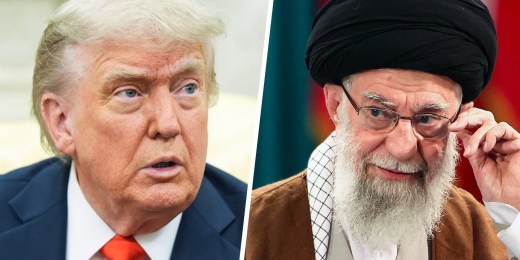
Fmr. U.S. Envoy to Iran reacts to U.S. strike on nuclear facilities and says Iran won’t negotiate soon
11:59
-

Anti-war protests form in New York City following U.S. strikes in Iran
02:27
-

Top House Armed Services Democrat: Trump violated the law with U.S. strikes on Iran
04:41
-
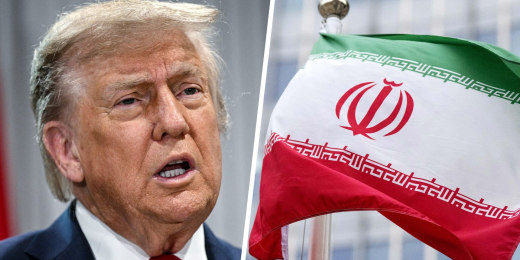
Fmr. U.S. Envoy to Iran says Trump should be more patient when seeking new Iran nuclear deal
09:16
-

Former Marine asks for sympathy for troops put in difficult position in L.A. over protests
05:05
-

Retired Lt. Gen. warns any U.S. operation against Iran’s nuclear program comes with heavy risks
08:57
-
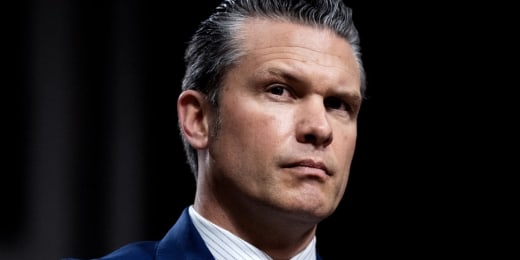
Rep. Auchincloss slams Defense Secretary Hegseth after fiery Capitol Hill national security hearing
05:46
-
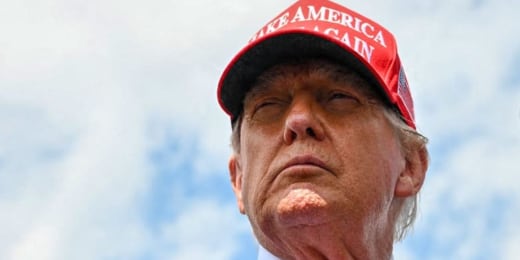
Former GOP advisor questions what advice Trump is listening to over Iran decision
07:44
-

Rep. Garcia questions new rules on congressional ICE facility visits and calls them ‘illegal’
07:05
-

Fmr. Rep. Riggleman torches Trump over handling of Israel-Iran conflict and his key decision
06:48
-

Israel says it killed top Iranian commander in strike
02:34
-

Mahmoud Khalil vows to keep speaking out against the war in Gaza: ‘The fight is far from over’
06:17
-

Analyst says it will take weeks, if not months, to know real damage to Iran’s nuclear program from U.S. airstrikes
05:12
-

Senator Chris Van Hollen on Trump spending bill as it enters debate on Capitol Hill
08:23
-

Inside the Iran airstrikes briefing: Rep. Moulton on the demeanor of Secys. Rubio, Hegseth
08:27
-
Now Playing

Republican North Carolina Sen. Thom Tillis announces he will not run for re-election
02:41
-
UP NEXT

‘This bill is a ripoff’: Sen. Amy Klobuchar on Trump Budget Bill
08:51
-

Family of Venezuelan man deported to El Salvador has no idea of his condition
02:53
The Dictatorship
RFK Jr. wants all Americans to use wearable health tech. I have questions.
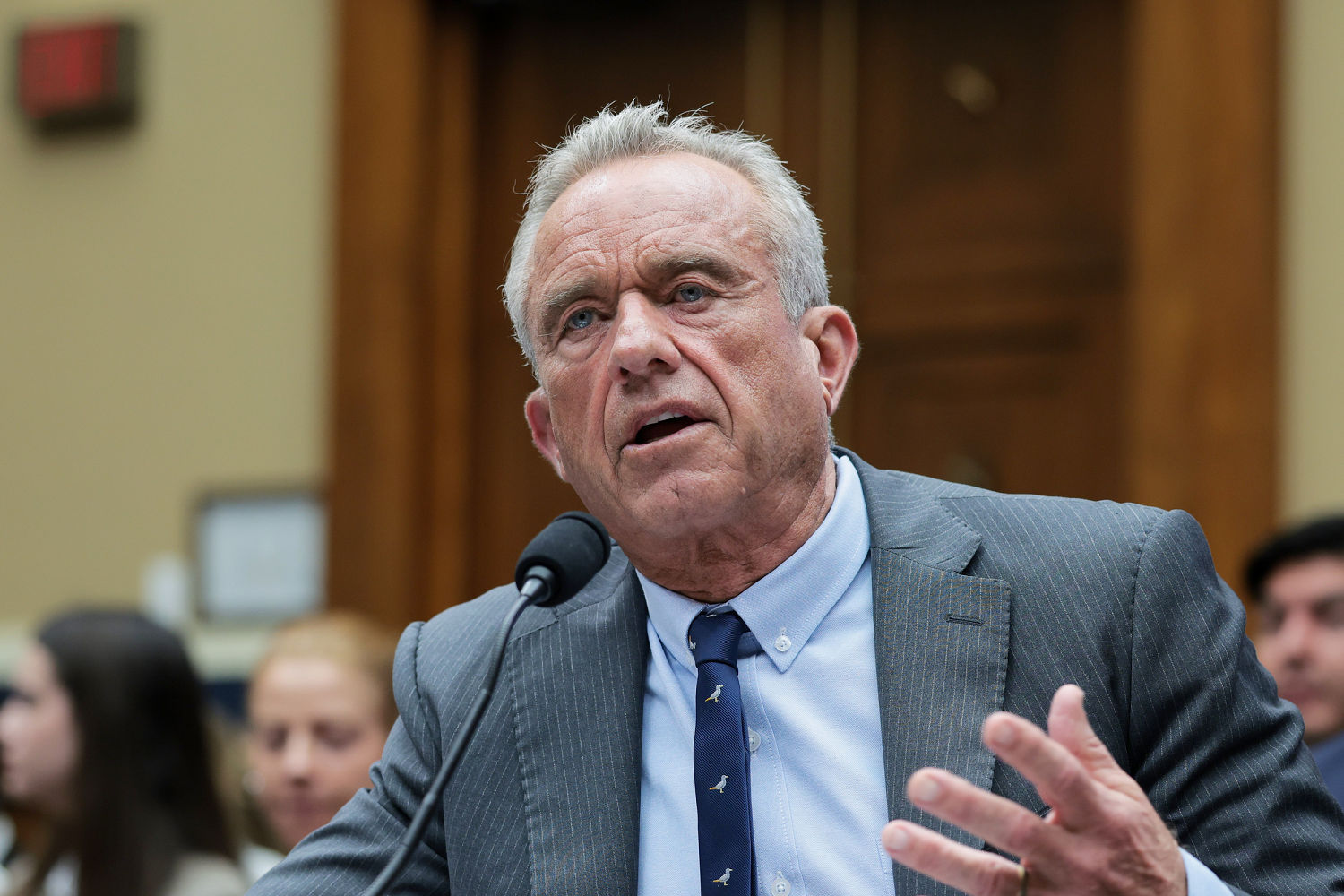
In a congressional hearing this past week, Health and Human Services Secretary Robert F. Kennedy Jr. shared his views on improving the health of Americans. “My vision is that every American is wearing a wearable within four years,” he said. And next week, his department is scheduled to launch one of “the biggest campaigns in HHS history,” focused on encouraging Americans to use wearable technology to “take control over their own health.”
Making wearable health technology accessible to more Americans is an excellent idea — the massive $63 billion market for fitness trackers and $12.6 billion glucose monitor sector are growing exponentially due in part to the fact that awareness of one’s biometrics, from steps taken to sleep quality to calories consumed, can help improve health. But we shouldn’t overstate the power of these devices to transform the well-being of Americans, both because of the limitations of these technologies and because of the administration promoting it.
Making wearable health technology accessible to more Americans is an excellent idea — but we shouldn’t overstate the power of these devices.
Wearable health aids have a long history. Leonardo da Vinci designed the first pedometer around 1500, and Holter heart monitors were invented in 1949. Digital technology, however, has accelerated innovation in this space exponentially, such that in the 15 years since the release of the first step-counting Fitbit in 2010, devices now track sleep, breath, stress levels and more.
A federal campaign to promote wearables appeals to the commonsense idea that the more you know, the better equipped you are to improve your health — and thus more Americans should have access to this knowledge. And this initiative certainly lines up philosophically with the individualistic sensibility at the heart of the “Make America Health Again” movement’s animating definition of wellness, which elevates self-knowledge — “do your own research” — above clinical expertise, especially if it involves pharmaceutical intervention. Indeed, in the hearing, Kennedy described friends who “lost their diabetes” after wearing glucose monitors, thanks to their “miraculous” awareness of the impact of their dietary choices (evidence does show that diet and exercise changes can reverse Type 2 diabetesand that continuous glucose monitoring can be effective in motivating patients to make those shifts). Notably, the proposed HHS wearables campaign would come with a price tag of $80 a month for individuals, as opposed to GLP-3s, which can cost a person over $1,000 monthly.
You don’t need to be a MAHA acolyte to find this strategy compelling for a nation struggling with both chronic illness and the cost of health care. Furthermore, large-scale advertising campaigns encouraging personal fitness are a long-standing and effective federal strategy. It was Kennedy’s uncle President John F. Kennedy who most famously employed this approach, launching a national publicity campaign to encourage Americans to be more physically active, both in their personal lives and by lobbying local officials to fund physical education and community recreation programs.
That was during the Cold War, and JFK often linked the need to get moving with military preparedness. But he also talked about taking responsibility for looking good and feeling “vigorous,” for men, women and children alike. “Soft Americans” were morally suspect and national security risks, the then-president-elect wrote in a 1960 Sports Illustrated essay, but they also looked less attractive at the beach or the pool, the environments in which he was often photographed.
Physical education classes were as important as academic offerings, his administration emphasized in pamphlets, posters and even a special-release jingle written for P.E. classes that encouraged boys and girls through a playful, synchronized routine to “get rid of that chicken fat.” These federal campaigns didn’t solve the issues of sedentariness and obesity, but they were integral in establishing the expectation that it is the responsibility of every American to care about their physical fitness.
Echoes of the elder Kennedy’s approach are unmistakable in Robert F. Kennedy Jr.’s announced advertising campaign. The differences, however, should give us pause. For one, the sophisticated wearable technology the health secretary celebrates as “miraculous” is much more powerful than the toe touches and jumping jacks promoted in JFK’s day. This is a boon, but we should be wary of the “techno-utopianism” that assumes more sophisticated technology always yields a better future.
We should not overstate the “miraculous” potential of any intervention, especially given this administration’s repeated ethical breaches on questions of security and science.
Psychologists, for example, track a recent rise in orthorexia, body dysmorphia and anxiety, disorders that only stand to be aggravated by access to endless streams of biometric data. More philosophically, sociologists warn of the dangerous tendency toward “the quantified self” and attendant “intimate forms of surveillance,” in which we normalize defining ourselves as an agglomeration of figures and metrics, existing only to be optimized.
Most immediately, as Kennedy was asked in the hearing but did not clearly answer, are concerns about data collection and privacy, especially relevant due to recent breaches like the 23andMe hackwhich leaked the data of millions of users to the public and potential nefarious actors. Fitness tracker data has already created a specific liability. The Strava running app, for example, has repeatedly revealed sensitive locations of troops and political figures to the public.
These are thorny but perhaps resolvable problems. It is true that making America healthy is an urgent priority and that individuals should be empowered to be stewards of their own well-being. We must use every tool at our disposal to achieve better health outcomes, and this can include partnering with the dynamic fitness and technology industries, the innovation of which outpaces that of the public sector.
That said, we should not overstate the “miraculous” potential of any intervention, and especially given this administration’s repeated ethical breaches on questions of security and science — and even its alleged affinity for eugenics — we should be especially vigilant about how this initiative is plays out.
Natalia Mehlman Petrzela is Professor of History at The New School in New York City. She is the author of two books, most recently “Fit Nation: The Gains and Pains of America’s Exercise Obsession,”and is currently a Carnegie Fellow, working on a new book about education and political polarization.
-

 The Josh Fourrier Show8 months ago
The Josh Fourrier Show8 months agoDOOMSDAY: Trump won, now what?
-
Uncategorized8 months ago
Bob Good to step down as Freedom Caucus chair this week
-
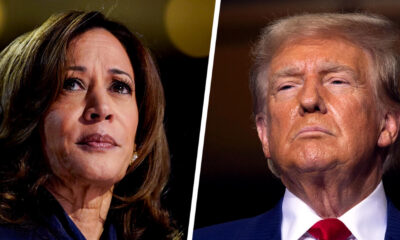
 Politics8 months ago
Politics8 months agoWhat 7 political experts will be watching at Tuesday’s debate
-

 Politics8 months ago
Politics8 months agoHow Republicans could foil Harris’ Supreme Court plans if she’s elected
-
Economy8 months ago
Fed moves to protect weakening job market with bold rate cut
-
Economy8 months ago
It’s still the economy: What TV ads tell us about each campaign’s closing message
-
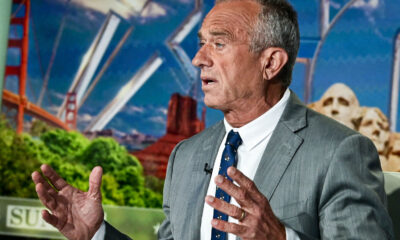
 Politics8 months ago
Politics8 months agoRFK Jr.’s bid to take himself off swing state ballots may scramble mail-in voting
-
Uncategorized8 months ago
Johnson plans to bring House GOP short-term spending measure to House floor Wednesday


